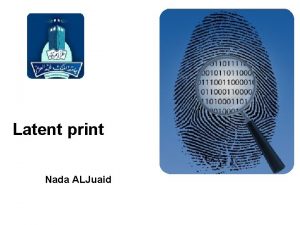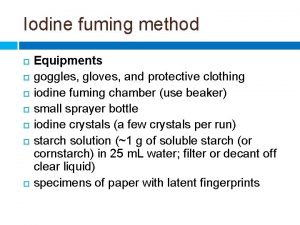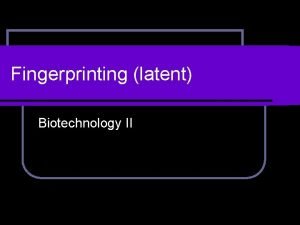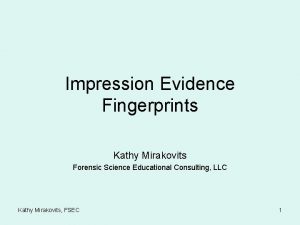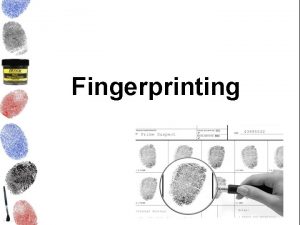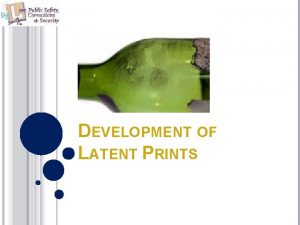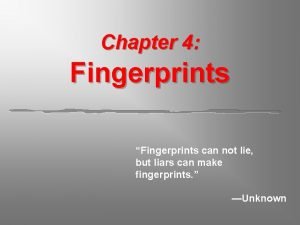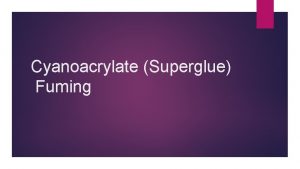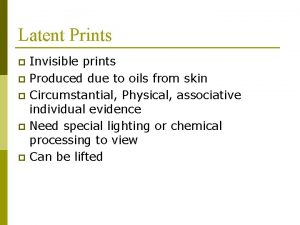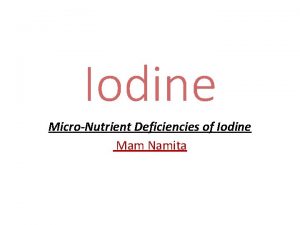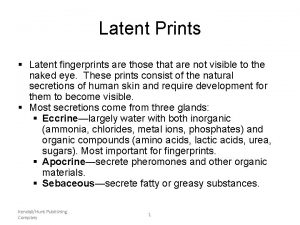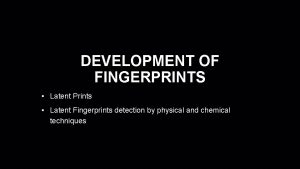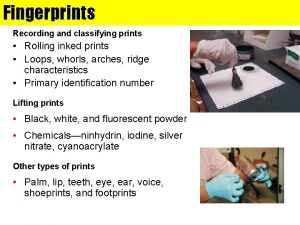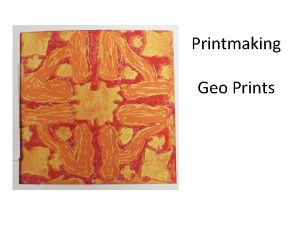Iodine Fuming Iodine Fuming Used when latent prints











- Slides: 11

Iodine Fuming

Iodine Fuming Used when latent prints need to be developed on porous surfaces such as paper.




In iodine fuming, natural body fats and oils in sebaceous material of a latent print temporarily absorb the iodine vapors. There is a chemical reaction…

This results in a change in color, from clear to a dark brown, until the effect fades with time. The color change can be made permanent by the application of certain materials, but the developed latent can usually be photographed at the greatest intensity of color change and then allowed to fade.

Ø Ø Suspend sample in beaker with paperclip and rubber band containing 1 g of iodine crystals and cover glass Petri dish. Heat the iodine crystals slowly and gently over candle to about 50 ºC with a heating device. Observe the development of the prints and when enough contrast has been obtained between the fingerprint and the background, remove the sample from the heat source, but keep them covered with the Petri dish. Remove from the beaker and quickly step back. Observe the prints. Record how long it takes the prints to fade.

Answer the questions on the lab handout COMPLETELY individually (you may refer to the Power. Point): 1. How does iodine fuming “work” (what causes the color change)? 2. Is the reaction that occurs a chemical or physical change? 3. On what type of substances is iodine fuming used? 5. What are some advantages of using iodine fuming? 6. How are iodine prints made permanent? Answer the “General” questions (#6 -7) on the lab sheet as well on the same paper

Look in your book pgs 64 -67… When to use each type of fuming technique… Iodine fuming – porous substances such as paper, cardboard, wood…. In iodine fuming, natural body fats and oils in sebaceous material Ninhydrin – same as above react with amino acids. First used in 1954. Cyanoacrylate – (superglue) - any smooth surface i. e. glass, plastic, vinyl – but crime scene investigators are trying to get techs to use this for everything because it produces a more permanent type of print.

o o http: //www. youtube. com/watch? v=Lhw. GEw 9 NFs http: //store. sirchie. com/Latent-Print-Dev. Iodine-Fuming-C 424. aspx
